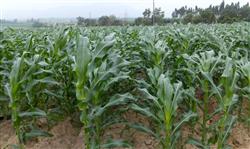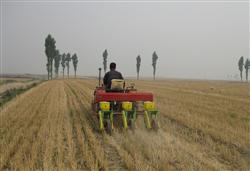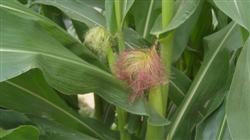How to manage the planting of corn in the middle and later stage?

How to manage the planting of corn in the middle and later stage? Please give guidance on the management of corn in the middle and later growth period. You can refer to the following methods: fertilization 1. Ear fat. Generally, nitrogen fertilizer is re-applied in the big trumpet mouth period, accounting for about 50% of the total topdressing amount, and standard nitrogen fertilizer is applied 30-40 kg per mu. two。 Grain fat. It generally accounts for about 10% of the total amount of topdressing, with 10 kg of ammonium bicarbonate per mu. When fertilizing, open a ditch 10-15 cm wide at 10 cm from the plant, with a depth of 9-12 cm. Cover the soil and water strictly after fertilizing in the ditch. Control of corn borer at ear stage (2349, 8.00,0.34%) Chilo suppressalis can be spread in corn heart leaves with 2349 phoxim granules 1.5-2 kg plus fine sand 5-6 kg per mu, or 0.1% poisonous soil prepared with 50% phoxim EC. Control corn leaf spot, spray with 50% carbendazim 500-800 times liquid; control corn rust and brown spot, spray 75-100 ml per mu with 20% triadimefon EC at the initial stage of the disease. Emasculating corn will help to increase production. Male removal can reduce nutrient consumption, promote female ear development, reduce plant height, improve ventilation and light transmission conditions, enhance lodging resistance, overcome the disjoint phenomenon of female and male ear flowering, help to meet at flowering stage, increase seed setting rate, and reduce the harm of borer. To get rid of the male, it is necessary to grasp the time, it is difficult to operate early, and the male ear is too tender, so it is easy to pull out or bring out the heart leaves; if it is too late, the nutrient consumption is too much and the yield increase is not significant. The appropriate time for castration is when the male ear pulls out about 1/3 to half of the heart leaves, and then the hand can be pinched and pulled out with a little effort. It is better to operate from 9 am to 4 pm on a sunny day, so that the wound can heal easily. The number of castrated plants generally accounts for about 1/3 of the total number of plants in the whole field, with no more than half at most. The two lines near the ground and the two plants on the ground should not be emasculated, so as not to affect pollination. After castration, the effect of auxiliary pollination is better. Farmers are used to harvesting when the bracts of corn turn yellow and the top of the grain hardens. According to years of practice, the harvest is too early and the 1000-grain weight is low, which affects the yield. The sign of corn maturity should be the disappearance of grain milk line, and at this time, the 1000-grain weight is high, which can increase the yield by 8% and 10% compared with the traditional harvest. On the same ear, the upper grain milk line forms first and disappears early, while the grain milk line at the base of the ear forms late and disappears late, so when determining the suitable harvest time, the grain milk line in the lower part of the ear should prevail. Click to get more corn planting techniques click to get more food crop planting techniques
- Prev

How to apply fertilizer when sowing summer corn?
How to apply fertilizer when sowing summer corn? Please introduce the main reasons for sprouting and seedling burning of sowing corn such as improper application of seed fertilizer: first, the excessive application of seed fertilizer causes seed or seedling burning due to the contact between root system and chemical fertilizer in the process of seed emergence. Second, it is a kind of fertilizer and seed mixed sowing, seed fertilizer application.
- Next

How to manage the planting of summer corn in the middle and later period?
How to manage the planting of summer corn in the middle and later period? Please introduce the management method of planting summer corn in the middle and later stage, you can refer to the following methods for management: first, skillfully use water and fertilizer to promote to the end. The growth period of summer corn is short, and the demand for water and fertilizer is concentrated, which should be promoted to the end. 1. Early irrigation to save water, early application of fertilizer. Summer corn.
Related
- The first cup of black tea in spring, the flavor and history of tea gardens in Kenya, Africa
- The computer can not only choose potatoes, but also grow tea rice. AI will grow winter oolong tea champion.
- It is not only the inflated tea bitten by insects, but also engraved with the four seasons tea in Beipu.
- The Oriental Beauty Tea Festival in Zhuxian County takes the stage at the weekend to experience the plus-size feast of oil tea.
- & quot; Oriental Beauty Tea & Exploration of Emei in Hsinchu, the hometown of quot;
- The new variety of strawberry "Tainong 1" dessert is the first choice with mellow aroma. Crimson gorgeous
- History of Tea in Taiwan: from Wild Inner Mountain to Export Tea Garden
- Two types of Taiwan Oriental Beauty Black Tea won the British three-Star Award for Childhood Tea Xiang Zhang Jiaqi changed from pilot to champion tea maker.
- Banana species and varieties: the planting history of Taiwan Xianren banana and dwarf banana is long, is banana disease resistant?
- Coffee planting Technology: Qianjie Coffee from Seedling to harvesting

